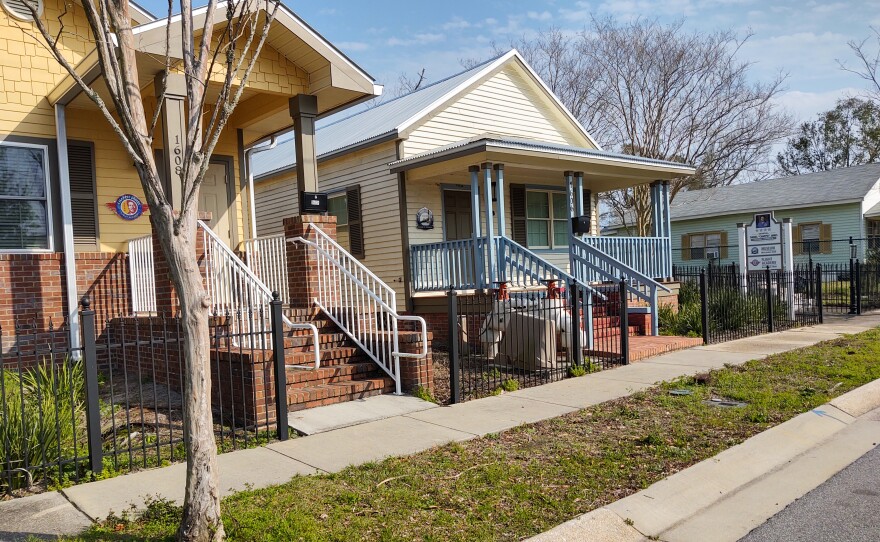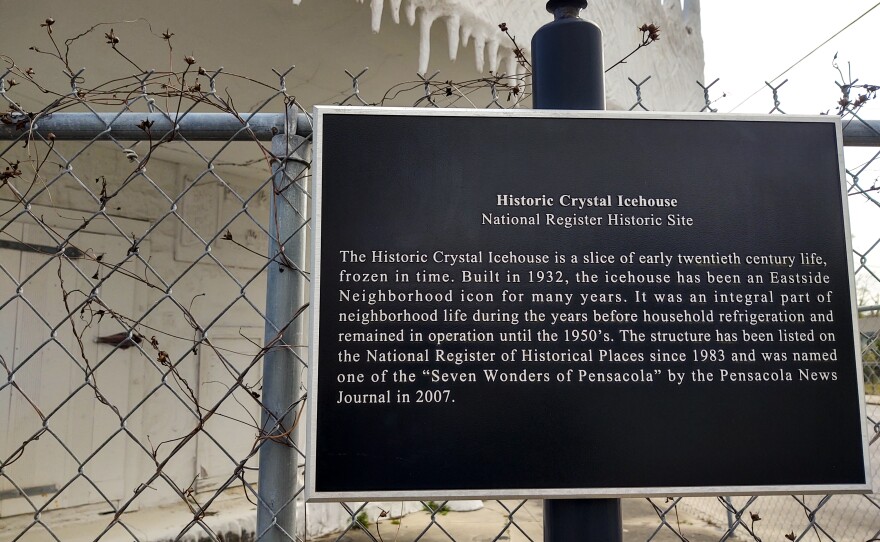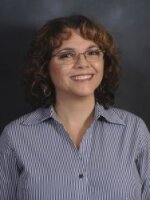Pensacola has a varied and deep cultural heritage, from its Native American and Spanish colonial roots to its African-American history. For Black History Month, WUWF is digging into the archives for a tour of the Black History Trail in the City’s Eastside Neighborhood.
“The Eastside Neighborhood is actually teeming with sites of historic and cultural interest,” said Helen Gibson, executive director of Pensacola’s Community Redevelopment Agency.
More than a decade ago, she played a significant role in the development of the eastside corridor and efforts to save and share the history of its many prominent African-American residents.
“Many times there are facts that kind of die away when the older of our generation dies away, and we wanted to preserve that information because it is significant not only to the development of the area, but the city as a whole.”
Official plans for the Eastside Neighborhood Black History Trail were unveiled in 2004, part of the Eastside Neighborhood Plan prepared by the city's Community Development Department. In 2009, I joined Gibson for a tour of the area extending from a welcome sign at the corner of Fisher and Martin Luther King, Jr. Dr. to just south of Cervantes and east from Interstate-110 to 8th Avenue.

Initially, the trail highlighted 10 sites, two of which are on the National Register of Historic Places.
“Probably our most well-known is the birthplace and early school site of Gen. Daniel “Chappie” James, who was the first four-star African-American General for our nation,” Gibson began. “He was a Tuskegee Airman and he was one of the instructors for the famed 99th Squadron.”
The site in the 1600 block of MLK Dr. is now home to the General Daniel “Chappie” James, Jr. Museum and Flight Academy.
The other site on the National Register of Historic Places is a small white building just a few blocks to the north (501 E. Jordan St.) At one time, it was known locally as one of the seven wonders of Pensacola.
“The Crystal Ice House was erected in 1932. It is a remnant of the early 20th Century, prior to refrigeration being a part of everyone’s home,” said Gibson as she pointed out the unique architecture of the structure that appears to be carved from ice.
Just around the corner on 6th Avenue (2005 N. 6th Ave.), we find the Spencer Bibbs Center, named for one of the more prominent educators from the community.

“The first black Superintendent of Schools, or actually in that day he was known as the Superintendent of Colored Schools, Spencer Bibbs, petitioned the school board to locate a school on the eastside,” she noted.
At the time of the request in 1919, the children had to walk over two miles to the nearest colored school. In the interim, the part-time hack driver -yesteryear’s version of a taxi driver - used his horse-pulled buggy to take the kids to school.
“What he would do is load up the students in his hack and transport them over to the Gibson School on the west side. But, fortunately, he was granted his petition to have a school built on the east side and this lovely school, which was originally known as PS 44, was built here and then named after him.
The original Spencer Bibbs School was a white wooden structure. The current brick building built in the 1960s continued to serve as an elementary school continued until 2012.
According to Gibson, the Eastside Neighborhood was also the place where some of Pensacola’s first African American doctors once lived and worked.

“Dr. John Lee Pickens, he was one of the first and he also was the black coroner for Pensacola, and his wife was the principal of J. Lee Pickens Elementary School,” said Gibson, noting that the school, which was also in the area is now closed. However, a historic marker denotes the site at 407 E. Gonzalez that was once the Pickens Medical Office.
Magee Field on MLK honors a physician who operated a local pharmacy and practiced medicine in Pensacola for 25 years in the early 1900s, beginning in 1910.
“Dr. A.S. Magee, a very excellent surgeon and in times of segregation, not having access to the hospital facilities had to actually perform surgeries in a residential facility,” Gibson explained. “And, there’s a story of how he performed a surgery, I believe it was to remove fibroid tumors, on a kitchen table.”
Another prominent physician was Dr. E.S. Cobb, who practiced medicine in Pensacola for almost 50 years, starting in 1916. A plaque at 601 E. Mallory marks the site of the Cobb Community Center, which is named in his honor.
At 900 N. Hayne, we find the John Sunday Home. Born to a slave woman in 1838, Sunday was a successful property owner and builder who became one of Pensacola’s wealthiest free persons of color.
“He was a Civil War soldier,” said Gibson, before pointing to Sunday’s business and political legacy. “He was our first black legislator from this area during Reconstruction. He was elected to the state Legislature and he owned property, had a grocery store in this area.”
Believed to be the first Black person elected to a public office in Pensacola during the 20th century, was Hollice T. Williams, who was also known as the Jackie Robinson of Pensacola. The park beneath Interstate-110 (E. Blount & Hayne) on the neighborhood’s western border bears his name.
It’s likely that most of the prominent individuals noted on the cultural heritage trail might have dined at the nearby H&O Café (301 E. Gonzalez), which was originally the site of a dry goods store.
“Mr. Tierce and his wife Anna, and his brother Hamp and his wife Ola, who were very wealthy businessmen, owned property throughout this part of the city and particularly owned the building that is now the H&O Café.
In fact, Hamp and Ola originated that establishment as a café and it was later sold to the Grier family that made it a special place, well-known for its food.”

After nearly seven decades in operation, the café closed in 2015.
The only church on the Eastside Black History Trail is one of the oldest. Allen Chapel AME, established in 1866, sits at the corner of 501 N. Guillemard and LaRua.
The newest addition to the trail - and not yet commemorated - is The Lost Community of Pensacola, which was demolished in preparation for construction of I-110 in the 1960s and ‘70s.
Information about Pensacola's Eastside Neighborhood Black History Trail is available on the National Cultural Heritage Tourism Center website. Other areas highlighted include Pensacola's Downtown/Mid-town, Belmont-DeVilliers, Seville-Historic District, Perdido Key-Warrington, and Pensacola Beach. Pensacola's Black history is highlighted on the Visit Pensacola website. A couple of the Eastside sites are included on the African-American Heritage Socity of Pensacola Heritage Trail. The Daniel "Chappie" James Birthplace is listed on the Florida Black Heritage Trail.


















